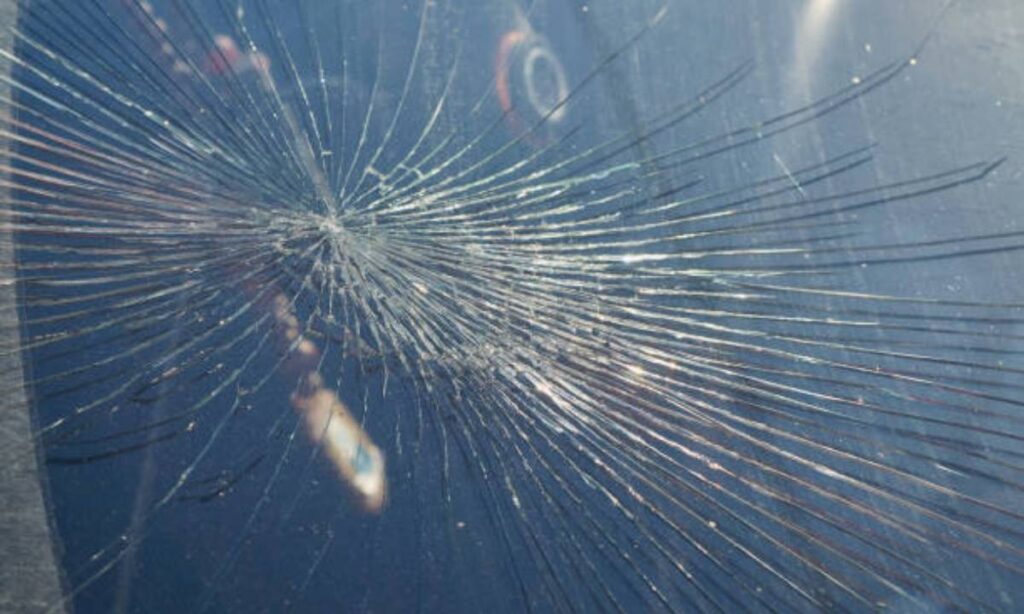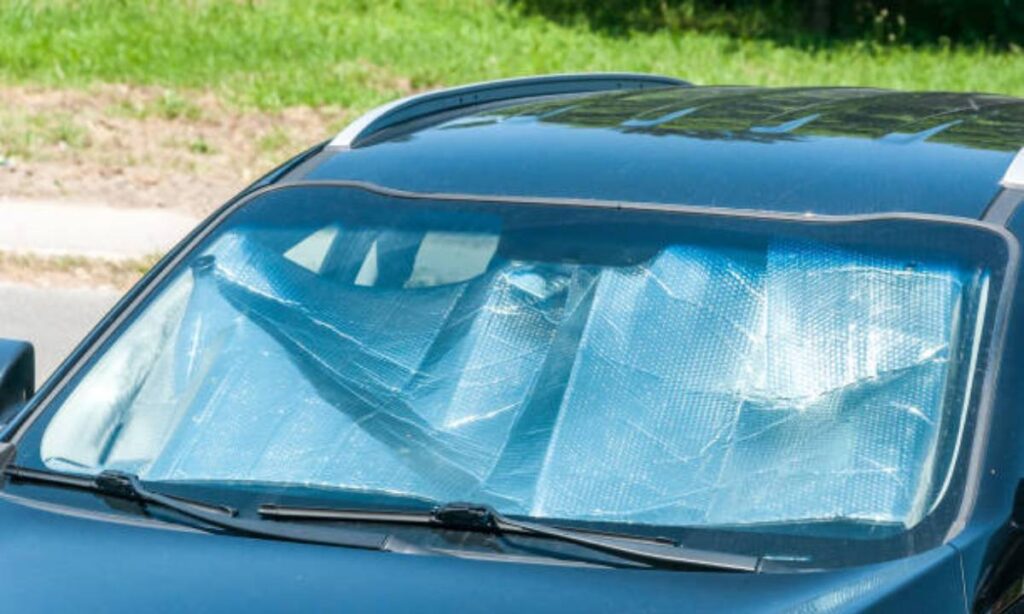5 Signs It’s Time to Repair or Replace Your Windshield
The windshield of your vehicle is not just a sheet of glass; it’s a critical component of your car’s structural integrity and safety. It shields you from the elements, provides visibility, and plays a crucial role in airbag deployment during accidents. As a responsible vehicle owner, it’s vital to keep your windshield in top condition. This article will help you identify five key signs that indicate it’s time to repair or replace your windshield.
Chips and Cracks
One of the most common signs that it’s time to address your windshield’s condition is the appearance of chips or cracks. These imperfections can happen for various reasons, such as rocks kicked up by other vehicles or even temperature fluctuations.
Chips are typically small dings in the glass that don’t extend beyond the surface. Cracks, on the other hand, are more substantial and can be differentiated from chips by their length. But not all chips and cracks are created equal. Some can be repaired, while others warrant a complete replacement.

Chips can often be fixed with a DIY repair kit. These kits contain resin that you apply to the damaged area to fill the void and stop the crack from spreading. However, it’s essential to use these kits as a temporary solution. They won’t restore the windshield’s original strength and clarity but can prevent the crack from growing.
Cracks are more concerning. If they’re too long or deep, they might not be reparable. You should consult a professional to assess the damage and determine whether a repair or replacement is necessary.
The key here is prompt action. Ignoring chips or cracks can lead to them spreading further, compromising your safety and potentially necessitating a full replacement.
Further Reading: Cracks and Chips: Understanding Common Windshield Issues
Spiderweb Cracks
Spiderweb cracks, also known as starbursts, are another type of windshield damage that deserves your immediate attention. These are characterized by a central point of impact from which multiple cracks radiate outward, resembling the pattern of a spiderweb. They are often caused by significant impact, such as a large rock hitting the windshield.

The reason spiderweb cracks are a serious concern is that they can compromise the integrity of the entire windshield. They affect visibility and can weaken the glass, making it more prone to shattering in the event of an accident. Additionally, the cracks can expand and worsen with changes in temperature and vibrations from driving, making a quick fix even more critical.
Given the severity of spiderweb cracks, it’s crucial to consult a professional as soon as you notice them. They will assess the extent of the damage and recommend either a repair or a full replacement, depending on the size and location of the damage.
Discoloration and Hazing
Over time, windshields can develop discoloration and hazing. Discoloration appears as patches of faded or discolored glass, while hazing manifests as a cloudy or milky appearance on the surface.
These issues typically occur due to prolonged exposure to the sun and environmental contaminants. While discoloration and hazing may not be as immediately concerning as chips or cracks, they can significantly affect your driving visibility, especially during night or adverse weather conditions.
Driving with a discolored or hazy windshield can be unsafe, as it can impede your ability to see clearly. Over time, this can lead to accidents or near misses on the road.
Preventing discoloration and hazing requires regular maintenance. Using a glass cleaner and a soft, non-abrasive cloth to clean your windshield can help remove contaminants and keep the glass in good condition. However, if these issues have already appeared, and cleaning doesn’t improve visibility, you may need professional help. They can assess whether the windshield can be restored through polishing or if a replacement is necessary.
Water Leaks
Water leaks around the edges of your windshield are another sign that it’s time to consider repairs or replacements. Leaks can occur for several reasons, such as aging seals or damage to the glass’s perimeter.
Water leaks might seem like a minor inconvenience, but they can lead to more significant problems if left unattended. Water can seep into your vehicle’s interior, causing damage to the upholstery, electronics, and even the vehicle’s structure. Additionally, it can promote the growth of mold and mildew, creating an unhealthy and unpleasant driving environment.
Detecting water leaks can be challenging, as they may not be immediately apparent. Signs include damp or musty odors in the vehicle, wet carpeting, or water stains on the headliner. If you suspect a water leak, consult a professional who can identify the source of the problem and recommend necessary repairs.
Ignoring water leaks is unwise, as they can escalate into more extensive issues, making the repair costlier and more complex.
Windshield Misalignment
A less obvious sign of windshield damage is misalignment. This occurs when the windshield is not properly sealed or secured in its frame. Windshield misalignment can have serious consequences for your vehicle’s structural integrity and your safety.
Misalignment can result from various factors, including poor installation, stress from extreme temperature changes, or even accidents. Signs of windshield misalignment can include visible gaps or misalignment between the windshield and the vehicle’s frame. You may also notice unusual wind noise, water leaks, or vibrations while driving.

If left unaddressed, windshield misalignment can compromise the structural strength of your vehicle. During a collision, the windshield may not provide the intended support to the roof, increasing the risk of injury.
If you suspect that your windshield is misaligned, consult a professional immediately. They will assess the extent of the misalignment and recommend the appropriate repairs, which may involve resealing or reinstalling the windshield.
When to Repair vs. Replace
Now that we’ve covered the five key signs that indicate it’s time to address your windshield’s condition, let’s discuss the critical decision of whether to repair or replace it. Here are the factors you should consider when making this decision:
1. Extent of Damage: The severity of the damage is a primary factor. Small chips and cracks can often be repaired, while more extensive damage, such as spiderweb cracks, may require a full replacement.
2. Location of Damage: The location of the damage on the windshield is important. Cracks near the edge or in the driver’s line of sight are more likely to require replacement. Repairs are generally suitable for damage away from the edges and outside the driver’s direct line of vision.
3. Safety: Your safety is paramount. If the damage compromises the windshield’s structural integrity or impairs your visibility, it’s crucial to opt for replacement. Don’t compromise safety for the sake of saving money.
4. Insurance Coverage: Check your insurance policy to see if windshield repair or replacement is covered. Many insurance policies cover these expenses, making it more cost-effective for you.
5. Cost: Assess the cost of repair versus replacement. In some cases, repair is a more affordable option, but if you have significant damage, a replacement might be a wiser long-term investment.
6. Aesthetics: While not a primary safety concern, aesthetics can be important to some. Keep in mind that repaired areas may still be slightly visible, whereas a new windshield provides a clear, pristine look.
Preventative Measures
Preventing windshield damage is always preferable to dealing with repairs or replacements. Here are some preventative measures to keep your windshield in top condition:
1. Maintain a Safe Following Distance: Keep a safe distance from the vehicle in front of you to reduce the risk of debris hitting your windshield.
2. Avoid Temperature Extremes: Sudden temperature changes can stress your windshield. Park your car in the shade or use a windshield sunshade in hot weather. Avoid pouring hot water on a frozen windshield in cold weather.
3. Regular Cleaning: Clean your windshield regularly to remove contaminants that can cause discoloration and hazing.
4. Maintain Windshield Wipers: Replace your windshield wipers regularly to prevent them from scratching the glass, which can impair visibility.
5. Inspect Seals: Check the condition of the seals around your windshield for signs of wear or damage.
Must Read Blog: Tips for Extending the Lifespan of Your Windshield After Repair
Conclusion
Your vehicle’s windshield is a crucial component of your safety and driving experience. Ignoring signs of damage can lead to costly and potentially dangerous consequences. Whether it’s chips, cracks, spiderweb cracks, discoloration, hazing, water leaks, or misalignment, prompt action is key to preserving the integrity of your windshield and ensuring your safety on the road.
If you notice any of these signs, consult a professional who can provide the necessary assessment and guidance on whether to repair or replace your windshield. Additionally, practicing preventative measures and regular maintenance can help extend the life and quality of your windshield, ultimately saving you time and money in the long run. Prioritizing your windshield’s health is a responsible and essential aspect of vehicle ownership.

